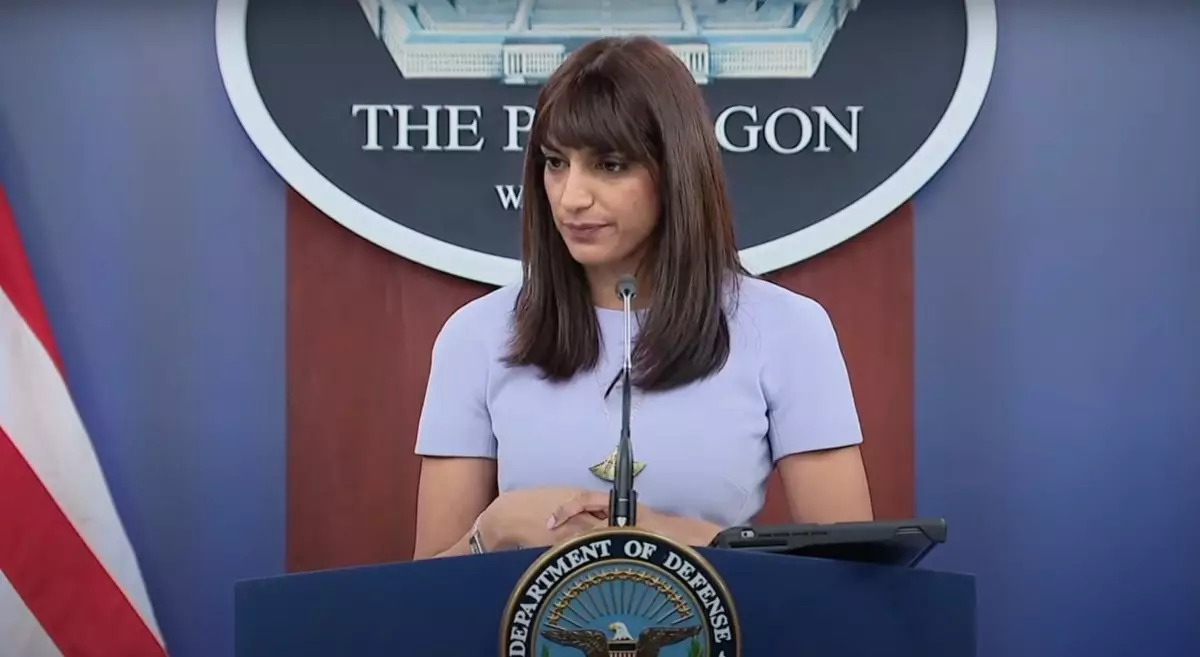The recent surge of unidentified drones flying over New Jersey and other northeastern regions of the United States has ignited a wave of curiosity and concern among the public and lawmakers alike. During a press briefing on Wednesday, Pentagon spokesperson Sabrina Singh addressed inquiries and outlined the government’s current stance regarding these enigmatic unmanned aerial vehicles (UAVs). In light of a U.S. Congressional hearing that took place a day prior, frustrations regarding the lack of clarity surrounding the drone activities were palpable. This evolving situation not only raises questions about national security but also reveals a gap in the management and regulation of increasingly sophisticated drone technology in the sky.
Investigation and Speculation: The Role of Lawmakers
The Congressional hearing highlighted the extent of drone sightings, with over 3,000 reports compiled by the FBI through public interfaces. This vast volume of eyewitness accounts suggests not only significant drone activity but also an urgent need for resolution. Many lawmakers expressed dissatisfaction as they demanded transparency and actionable intelligence from federal agencies regarding the drone incursions. Despite the myriad of reports, the Federal Bureau of Investigation could not ascertain the source of these drones, referring to ongoing investigations alongside state and local authorities. This ambiguity fed the anxious narrative among the public, generating widespread theories about potential motivations behind the drone flights.
One of the most crucial points drawn from the press briefing was the Pentagon’s firm assertion that, at present, there is no evidence linking these drones to a foreign threat. Singh explicitly stated that they do not stem from U.S. military operations, thereby diminishing fears regarding espionage or hostile action by foreign entities. This statement is crucial in alleviating concerns about national security for now, but the complete lack of clarity regarding who is behind the drones does little to ease public anxiety. Furthermore, Singh’s dismissal of a theory suggesting Iranian involvement adds another layer of relief, albeit not without skeptics continuing to simmer in speculation.
The impact of these drone activities reaches far beyond mere curiosity; it poses real consequences for public safety and everyday life. Instances have arisen where medical emergency responses were hindered by drones, as was the case when a medevac helicopter could not transport an injured individual due to drone interference. Such occurrences highlight the potential dangers of unregulated drone use, particularly close to busy urban environments and sensitive military sites. The concern among citizens is legitimate—that these aerial intrusions could disrupt not only emergency medical services but also public safety in broader contexts.
As the discussion surrounding these mysterious drones continues to capture attention, the intersection of drone technology and unidentified aerial phenomena (UAPs) has become impossible to ignore. As the prevalence of consumer and commercial drones increases, the need for rigorous scrutiny intensifies. The Pentagon’s growing mandate to evaluate UAPs lends credence to the idea that some sightings might be more than just rogue drones; they might involve phenomena that challenge our understanding of aerial technology—and perhaps even our understanding of reality. The potential overlap between drone misuse and unmanned aerial technologies only complicates the situation further, warranting a thorough approach to their examination.
There remains a pivotal question of accountability and future action as the Pentagon and other governmental bodies continue to investigate the drone sightings. The trials of the past few weeks have shown how gaps exist in communication, oversight, and the allocation of resources to counter-drone initiatives. Indeed, as the federal government navigates this growing concern, the financial commitment to counter-drone activity—a mere $500,000, as revealed in the Congressional hearing—raises eyebrows amid increasing drone usage. It is imperative for the government to strategize an adequate response to drone activity, ensuring that national security is prioritized while fostering a safer airspace for all citizens. The conclusion remains that unanswered questions surrounding the unidentified drones will persist until a comprehensive approach can effectively identify their purpose and authority within American airspace.

